
If you are looking for the best ABM tactics that go beyond surface-level advice like “align sales and marketing” or “make personalized ads,” this article is for you.
From tracking market and account penetration rate to deploying Sam Nelson’s ‘Agoge’ outreach method for your ABM BDR outreach, you’ll get proven tactics from thought leaders, plus, how ZenABM can help execute them.
Read on…
Instead of randomly putting numbers to your TAM based on some market reports here and there, you must get serious from the start to ace ABM:
Start by collaborating with Sales to define your Ideal Customer Profile (ICP) and calculate a realistic Total Addressable Market (TAM) from the bottom up.
Don’t rely on lofty top-down numbers alone.
As B2B marketer Matt Heinz cautions, “Just because you can make Excel say anything doesn’t mean you’ll actually be able to generate leads from 90% of your entire market!”

In other words, identify how many real, reachable accounts and buyers fit your ICP and plan around that.
Once TAM is defined, track your market penetration by measuring what portion of those target accounts you’re actually engaging.
ABM experts often use such account coverage metrics like the percentage of target accounts that show any engagement or pipeline.
A high coverage rate indicates you’re effectively penetrating your target market, whereas a low coverage rate suggests gaps in your outreach.
In practice, this means regularly reviewing how many of your TAM accounts have at least one contact interacting with your marketing or sales (via site visits, events, emails, etc.) and adjusting tactics to improve that coverage
An ABM agency founder, Debjit Sen, shared how most of his ABM campaigns were designed to tackle 1 or 2 stakeholders.
But in reality, the average buying committee he came across had about 5-6 people (which is already big), and so he warns that you should never underestimate the size of a buying committee/DMU:
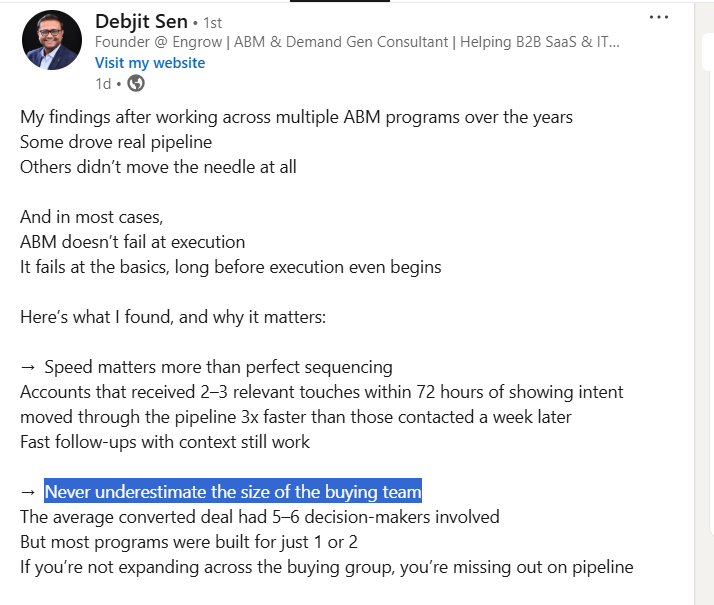
In fact, industry research says B2B DMUs having as many as 11 members isn’t rare anymore.
Conclusively, in ABM, it’s not enough to engage one lead at an account because B2B decisions are not made by one person.
And you should track how many key decision-makers and influencers within a target account you have engaged with your marketing or sales efforts. This metric has a name – Account Penetration Rate.
Example: If a target account has 10 relevant stakeholders and you’ve engaged 5 of them meaningfully, that’s 50% penetration in that account.
Here’s how you can improve upon it:
Thought leaders emphasize the importance of actively multi-threading your outreach.
This means mapping out the likely decision-makers (e.g. economic buyer, technical influencer, end-user champion, etc.) and intentionally engaging multiple contacts.
To achieve this, customize content for different roles (e.g. a business case for executives, technical docs for IT, etc.) and use tactics like account-specific webinars or workshops to involve entire buying teams (ofc this level of effort is only meant for high-value accounts).
This expert-level focus on engaging every relevant person in the account will significantly increase your chances of conversion and reduce single-thread risk.
ABM is already costly, not in terms of ROI but in the initial investment.
For instance, a 2019 SiriusDecisions study reported that the average ABM program budget was about $350K (excluding headcount) and many companies expected it to rise further in future.
And doing it at scale further increases the risk of you spending vast sums without discrimination.
And even when the returns deplete, teams don’t rethink their budget allocation. I’d say a kind of sunk cost fallacy starts operating here.
Here’s how you can calculate your ABM budget smartly, so you don’t have to learn the hard way:
Rather than asking for an all-new budget, shift existing marketing spend from low-yield broad programs to targeted ABM programs.
For example, if you were buying large contact lists or running untargeted ads, those dollars can be better spent on personalized content or direct outreach to target accounts.
Start with a pilot program if needed – request a trial budget for a few months to prove ABM’s impact, which reduces risk compared to a massive upfront ask.
Align with Sales on budget needs, like considering sharing costs for tools or programs.
Brandon Redlinger (ABM thought leader), for instance, advises reframing certain spends (like an ABM platform or data tools) as sales enablement investments, not just marketing’s ask.
This makes it easier to secure executive approval for ABM funding.
Expert ABM teams also adjust how the budget is spent.
Pre-ABM, spend might be spread across many generic programs; with ABM, it shifts to fewer, highly focused activities.
Nearly 50% of a typical ABM budget goes to program execution (events, ads, content), with the remainder to technology and staff.
High-performing ABM programs often increase spend on high-touch tactics like bespoke events or direct mail for target accounts, while decreasing spend on broad, untargeted lead gen.
The takeaway: Concentrate resources where they directly impact engagement in target accounts.
Free Resource: Try our free ABM budget calculator to estimate ad spend.

Smaller accounts might be easier, but warming up enterprise ones is not.
Simple one-and-done email blasts won’t make it.
Top sales development leaders on LinkedIn vouch for sequences that span 15+ touches across multiple channels, so you break through to busy prospects.
For instance, Outreach.io’s SDR leader, Sam Nelson, developed the famous “Agoge” sequence for high-priority accounts, which includes 16 steps over 21 business days.
Becc Holland (CEO and Founder at Flip the Script), perhaps inspired by the same, shared a similar outreach strategy in her LinkedIn post:

One key thing to note: Your first email should be the most personalized, and this personalization should be about pain points and not personal stuff (yes, sometimes people get this wrong).
Instead of the traditional MQL (Marketing Qualified Lead), when it comes to ABM, I have another useful jargon for you: Marketing Qualified Accounts (MQAs).
An MQA is a target account that has reached a threshold of engagement, indicating it’s ripe for sales outreach.
You must have clear criteria to identify an MQA, so your BDRs don’t miss hot accounts.
I prefer taking inspiration from GTM Pro Kyle Poyar’s ABM stages framework for this:

Example: The Userpilot team, which ran a successful ABM campaign, used the following ABM stages inspired by Kyle’s framework:
And their MQA stage was the ‘interested’ stage (5+ ad clicks, 10+ engagements, or 3+ webinars attended and an onboarding/ux audit session).
As soon as an account hit this stage based on the engagement thresholds, it was assigned to a BDR for outreach.
Also, your sales outreach must be immediate, and the messaging should be personalized based on the prospect’s pain points and behaviour.
ZenABM can help with this. It pulls each target account’s LinkedIn ad impressions, engagements, and clicks from LinkedIn’s official ads API:

And pushes all this engagement data as company properties to your CRM:
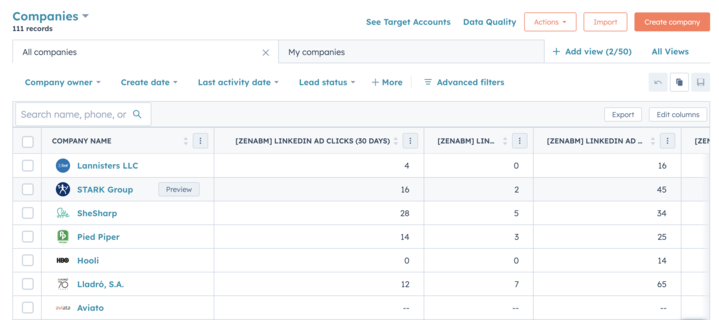
This ensures your sales team has access to each account’s ad engagement activity within their comfort tool.
Moreover, the tool assigns a BDR in your CRM accounts as soon as they reach the ‘interested’ stage:

So, immediate sales outreached – checked!
Plus, for BDR messaging personalization, you can tag each ad campaign with its intent (the feature/quality of your product/service being advertised by that particular ad), and ZenABM will analyze each company’s intent and push it as a company property to your CRM:
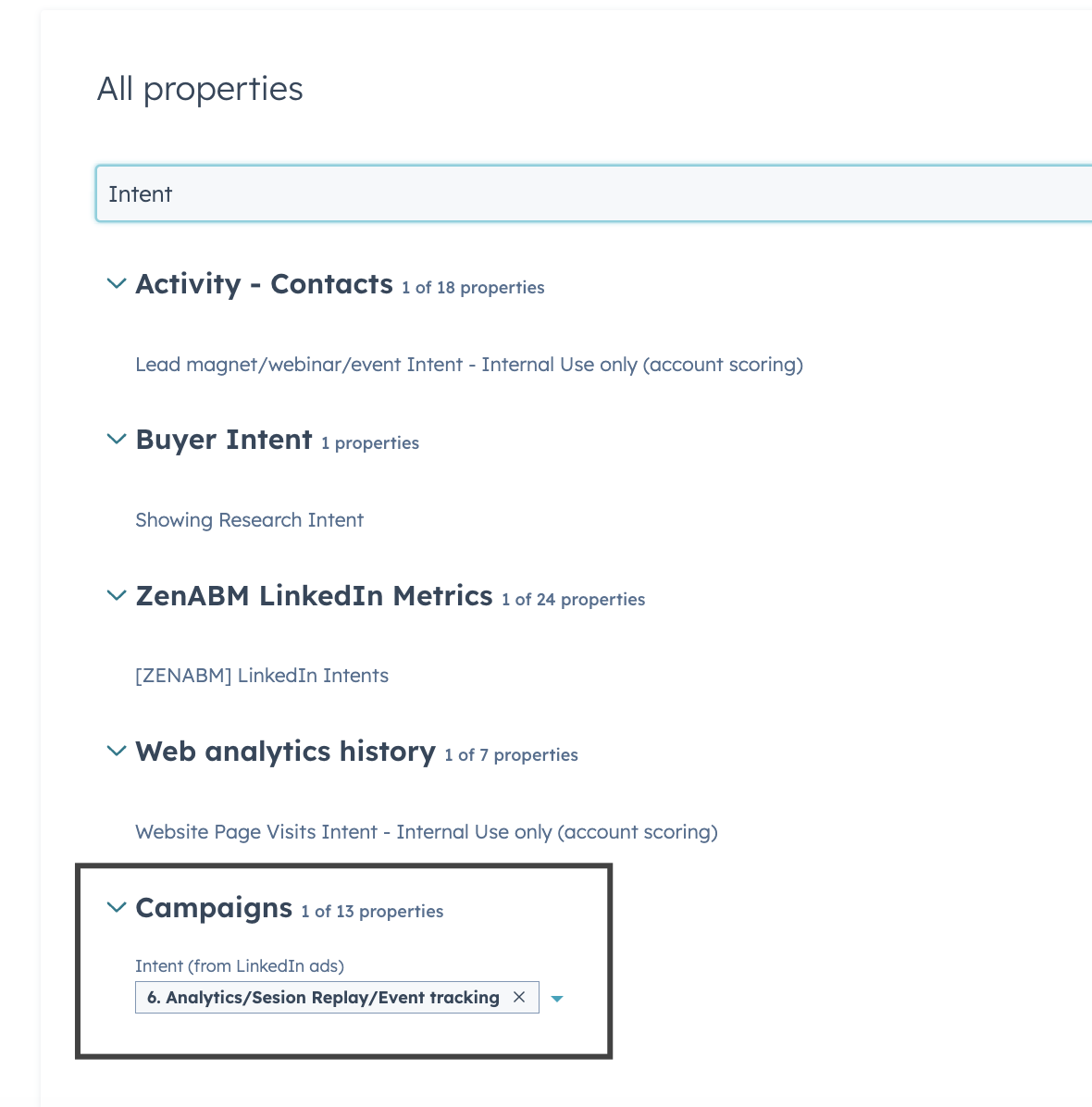
With this, your BDRs will not only know which hot accounts to reach out to, but also what to talk about in the outreach message.
Pro Tip: We talked about penetration KPIs in a previous tactic. Here are two more you should track:
See, ABM ops are already brutal and with all the above data hygiene issues, the campaign will only get tougher to orchestrate.
So, before launching targeted campaigns, expert practitioners cleanse their CRM and marketing automation data ruthlessly.
This means deduplicating leads, standardizing company naming (so that all contacts from the same account are properly linked), enriching records with industry/size info, validating key contacts, getting rid of spam enquiries via your site, etc.
Many ABM teams conduct a full ICP data audit at the start:
And while deduplication and contact validation is something you can do at gaps, tackling spam/bot enquiries that break through captchas and plague your CRM hygiene is a regular requirement.
So, here’s Tarek Reda’s (Founder at Blue Pencil Marketing Agency) workflow to automate CRM cleaning:

This workflow does it work in the background, so you can do more meaningful stuff – ABM.
Disjointed tools just won’t cut it in ABM.
Ensure your marketing automation, CRM, ad platforms, and any ABM tools are integrated to provide a unified view of account activity. For instance, if you’re using an intent data provider or LinkedIn Ads for ABM, pipe those engagement signals into your scoring model.
And before you hop on to buy expensive ABM tools and periphery tech. Your data house and ABM strategy must be sorted.
For instance, Emilia Korczynska, VP of Marketing at Userpilot, shared how she spent the first 2-3 months of working on their ABM campaigns, from looking for the right ABM solution. She scoffed when some people were telling her that she *didn’t need one*. And then, after doing all the discovery calls, demos and POCs with a number of them (Demandbase, Terminus, Rollworks, CommonRoom, NRich…), she realized she didn’t really want to use them and there was no need in the context of her ABM strategy.
Reason?
Most of these tools operate by trying to de-anonymize impressions and clicks from their own advertising networks—networks that often overlap significantly (up to 85%) with the sites included in Google’s Display Network. They typically rely on reverse IP lookups to identify companies behind ad clicks or visits.
However, this method is highly unreliable since only about 11% of companies actually register their IPs:

And with the rise of remote work, many employees access content from untraceable or personal networks.
As a result, even the best of these tools don’t go past 42% accuracy, according to a Syft study:
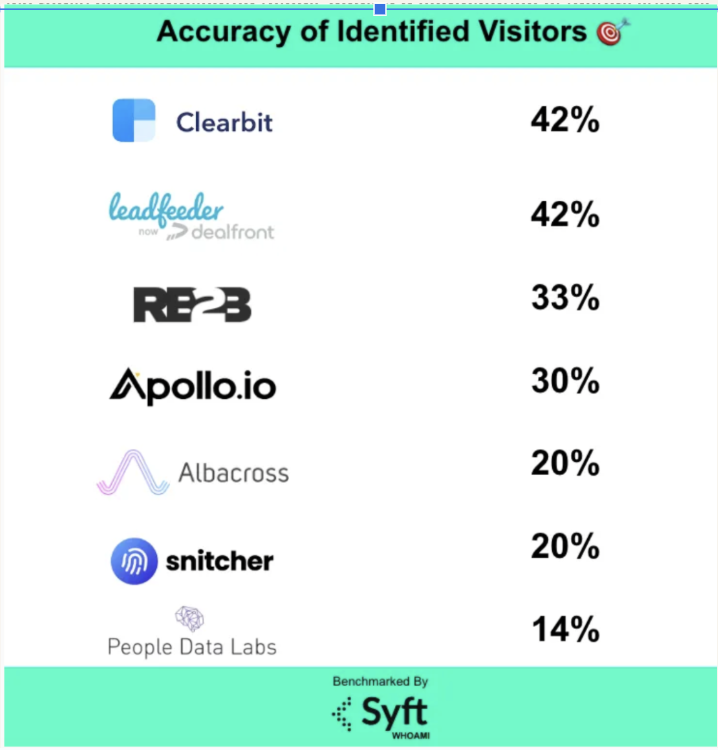
Display bots are infamous, too. for their bot fraud:

So, after a bad experience with display advertising, she decided to use just LinkedIn ads + their CRM (and even Hubspot marketing wasn’t really necessary as they stopped running matched audience (contact-based) campaigns after a few) to run their ABM campaigns.
Of course, they needed something to push the data from LinkedIn into their CRM and all those intents, and account stages, and so they invested in building ZenABM:
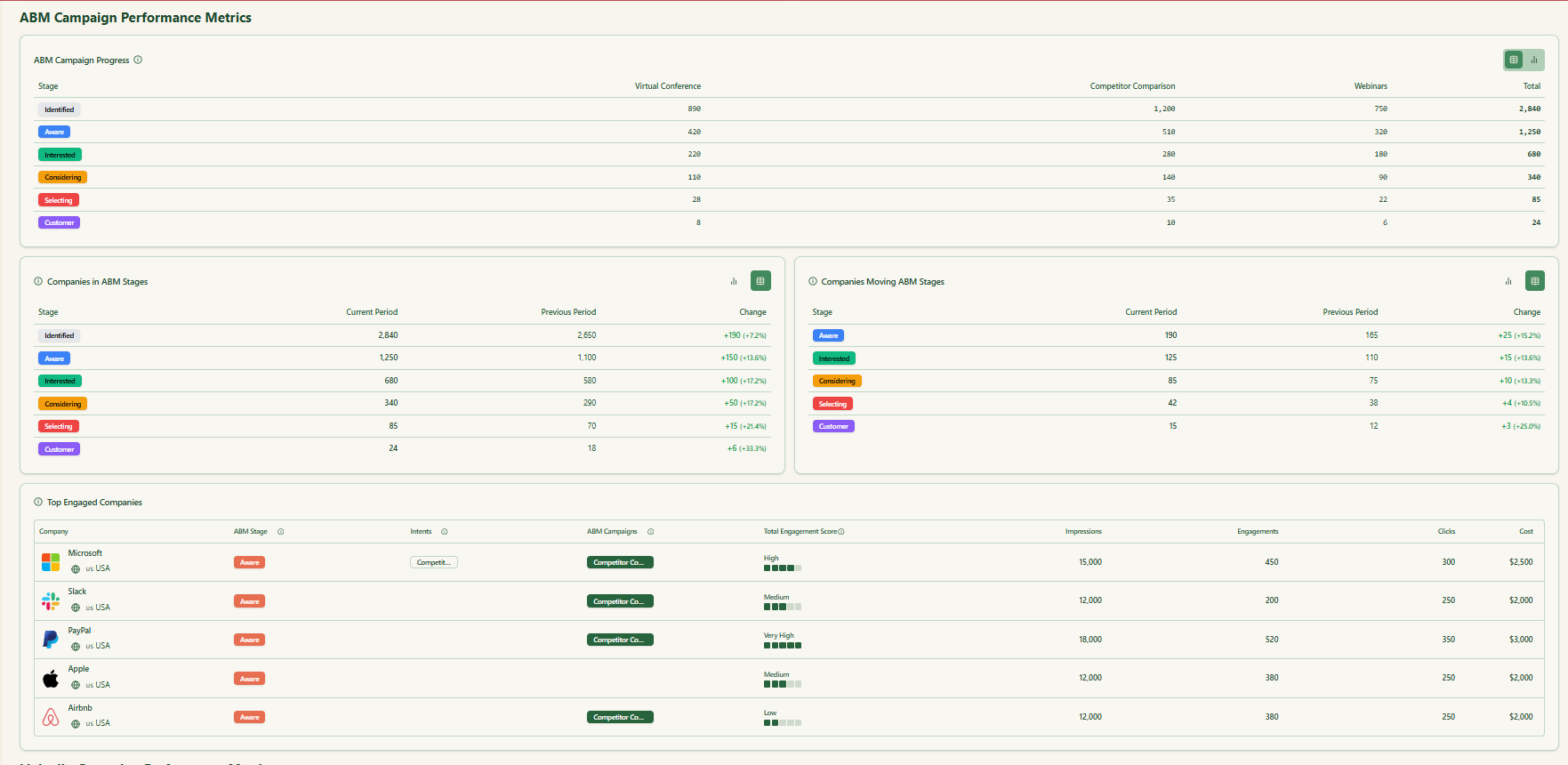
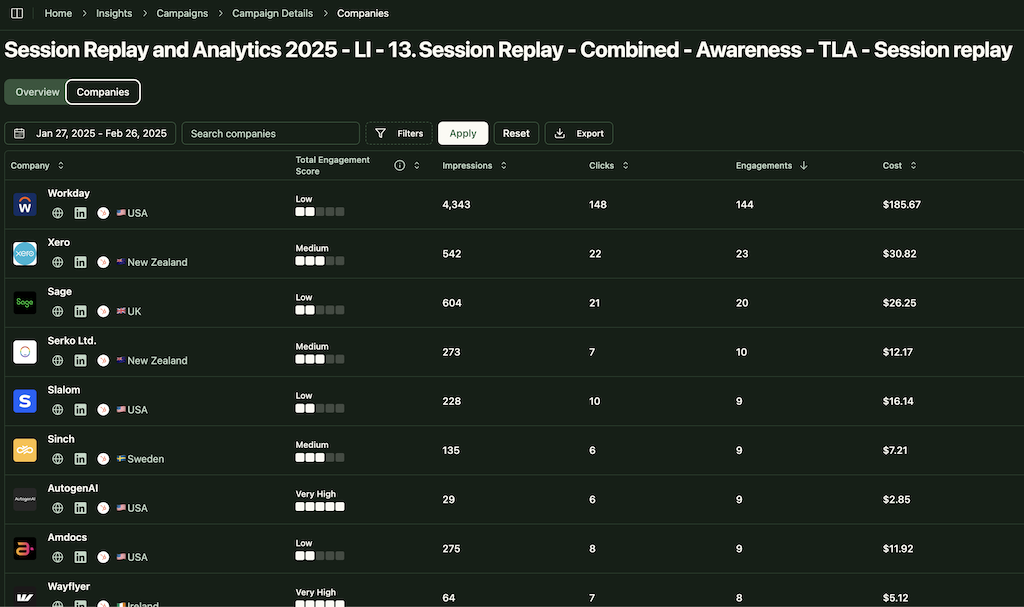
Yes, this is how ZenABM was born 🙂
Anyways, coming back to the lesson: your tech must align with your strategy, and all the components of the tech stack should be unified with each other.
ABM thought leader at Demandbase, Brandon Redlinger, puts it in the best way – gameplan-technology should enable strategy, not replace a lack of strategy:

Traditional demand-gen operates on a linear funnel (many leads in, few customers out). ABM flips that model:
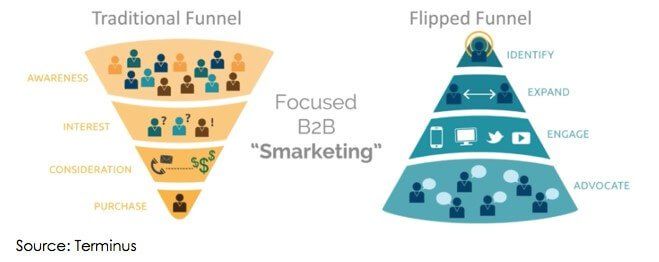
Here, instead of casting a wide net to attract anyone and then qualifying down, ABM begins with a curated list of best-fit accounts and aims to engage and convert a higher percentage of them through personalized, orchestrated efforts.
You can go about it in two ways:

For ABM, Sangram Vajre’s (Co-founder at Terminus) FlipMyFunnel stages can be used: Identify, Expand, Engage, Advocate.
Here, first you identify target accounts, then expand by reaching key people in those accounts, engage them with tailored content across channels, and finally turn customers into Advocates to drive referrals and expansion.
Another way to go about it is to drop the obsession with trying to squeeze your TAL through a funnel.
Emilia Korczynska, for instance, shared in her LinkedIn post how assuming the stage of an account initially makes no sense:

I mean, most ABM folks start their campaigns assuming their whole TAL is unaware of their product/service, and so they run very TOFU ads.
But the reality is that some accounts might be aware of your brand, some might be looking for a solution for their problem, some might be considering different solutions, etc.
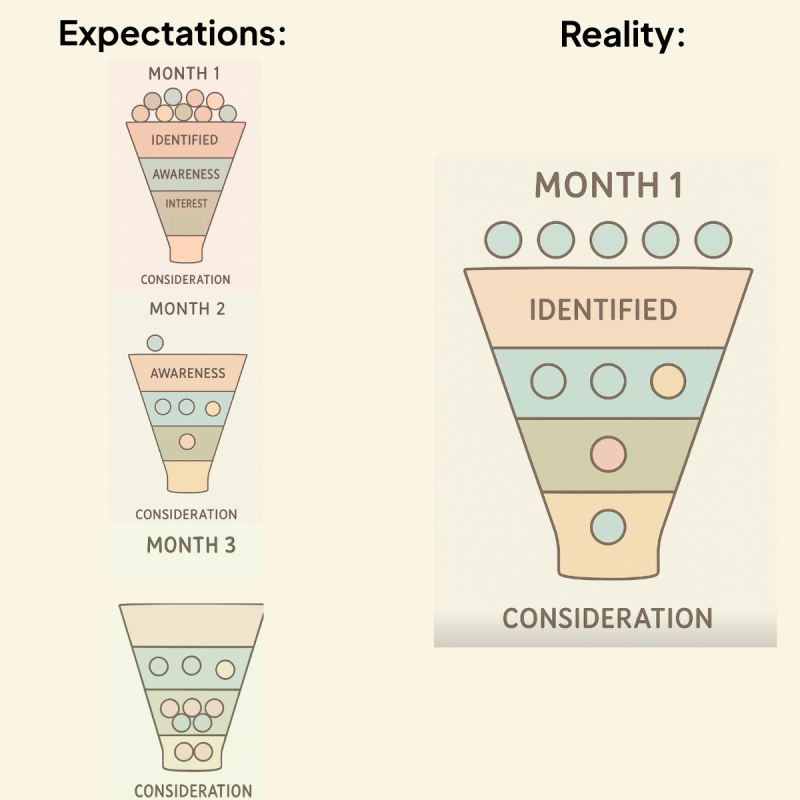
Emilia tackled this by serving the target accounts content for each stage of the “funnel” – educating them about the problem, the solution, and the product at the same time.
ABM pros recommend running ABM in phases instead of always being too sloppy or trying to scale on the first day.
They call it the ‘craw-walk-run’ ABM strategy:
Begin with foundational tasks:
In this stage, you might manually personalize a few campaigns (start with 1:1) and establish basic account dashboards. The goal is to learn and set up processes (e.g. agreeing on MQA definitions, configuring tools) without over-extending.
Key focus: team alignment and data readiness
Once the basics are in place, expand to a broader one-to-few or one-to-many ABM approach.
Introduce account-level engagement strategies like personalized content hubs, personaliezd ads, or multi-threaded email sequences for each account segment.
At this stage, you’re operationalizing plays: e.g. a playbook for how to handle new target accounts (send welcome kits, invite them to a VIP webinar, etc.).
You’re also beginning to coordinate marketing and sales touches in a more programmatic way (perhaps via an ABM platform or regular sprint planning with sales).
Now, in the ‘run’ phase, scale up while preserving personalization.
This might involve enabling your sales team with advanced tools and insights, running ABM campaigns for each tier of accounts, and layering in expansion and retention programs for customers.
At “run”, companies often invest in automation and AI too. For example, using intent data to trigger tasks when an account shows buying signals automatically.
Scalability becomes key here: Ensure you can maintain a high-touch feel without manually crafting every interaction. ABM leaders at this stage build modular templates (e.g. industry-specific messaging kits) to efficiently personalize at scale.
Free Resource: When you’re in the ‘run’ phase of your campaign, you’ll have to manage dozens of ad assets, new add-ons, and refined versus old versions. To manage them efficiently, you can check out our ABM campaign and ad asset management templates.
Finally, truly expert ABM practitioners create a culture of continuous improvement using data.
Instead of set-and-forget campaigns, they treat each account as a mini market and review progress frequently.
Key questions they ask:
This rigorous approach, akin to running many micro-campaigns, is what thought leaders refer to when they say ABM is “data-driven marketing on steroids.”
ZenABM is purpose-built for running ABM on LinkedIn and has the following key features:
ZenABM pulls company-level ad engagements (including impressions) from LinkedIn’s official API:

You can see each company’s impressions, ad engagement, ad spend, CTR, etc.
ZenABM matches the engaged companies with the deals in your CRM to analyze the ad impact on pipeline and revenue:

And the minimum impressions to consider a deal as ad-influenced is something you can decide on your own in ZenABM.
ZenABM calculates a “Current Engagement Score” for each company based on recent ad touches. When a company crosses your defined threshold, ZenABM updates its ABM stage in your CRM and triggers your sales team.

When you run multiple use-case campaigns, ZenABM shows which companies engage with which messages. This gives your reps a clear conversation starter without building complex workflows:
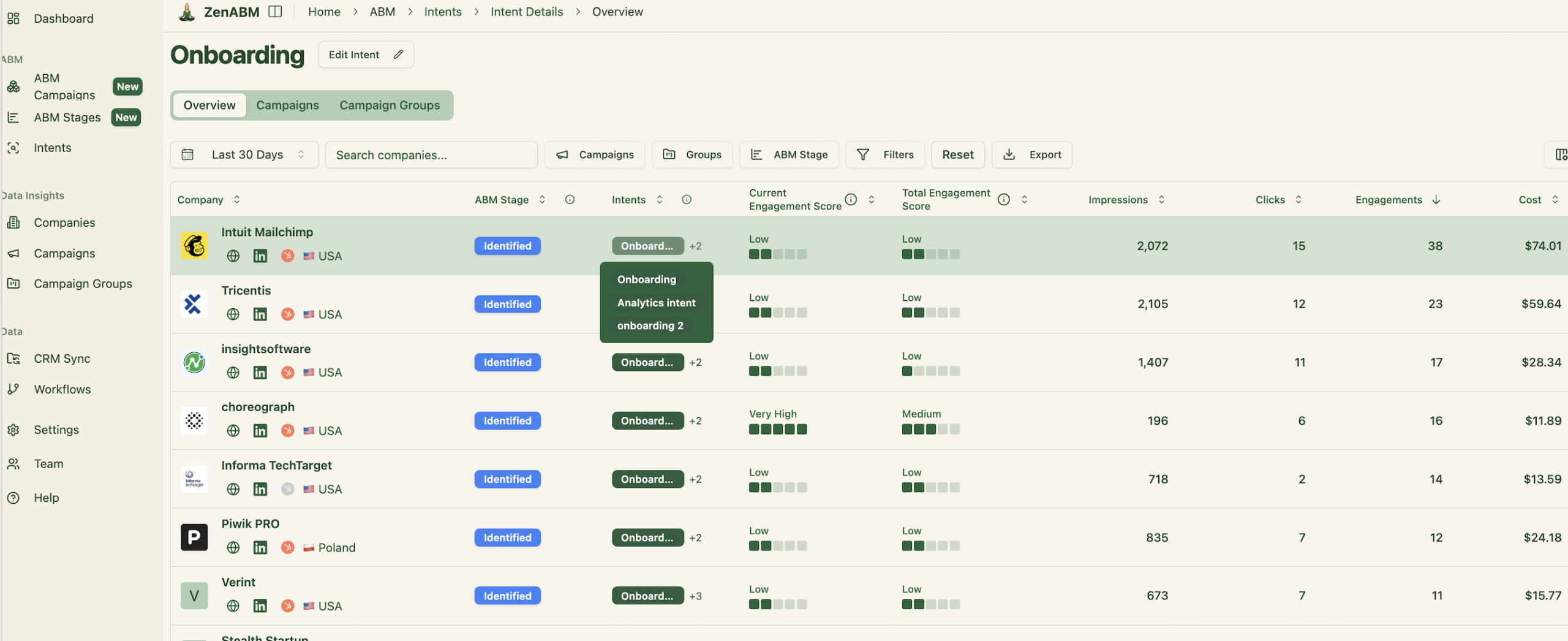
It also pushes the intent as a company property to your CRM:
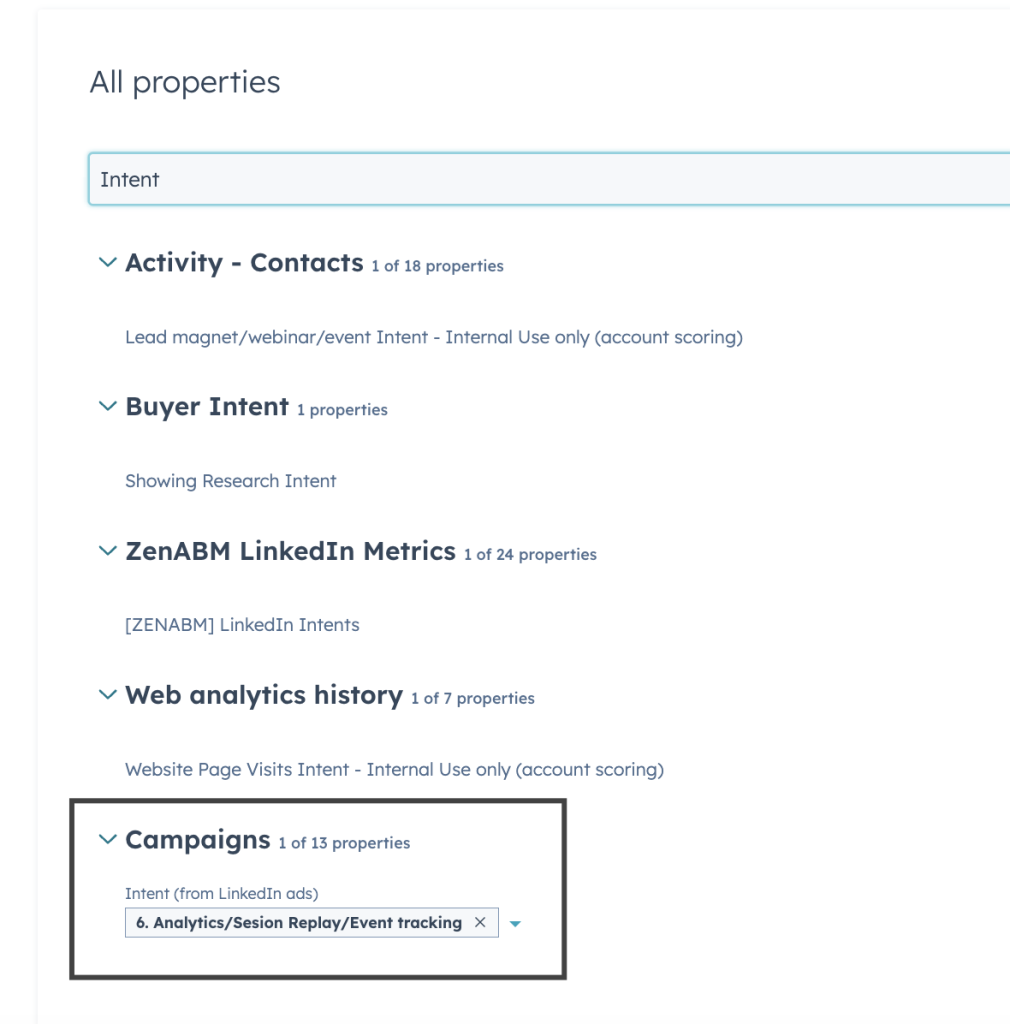
Stage tracking is also available in ZenABM, and you can set your own minimum thresholds for each:
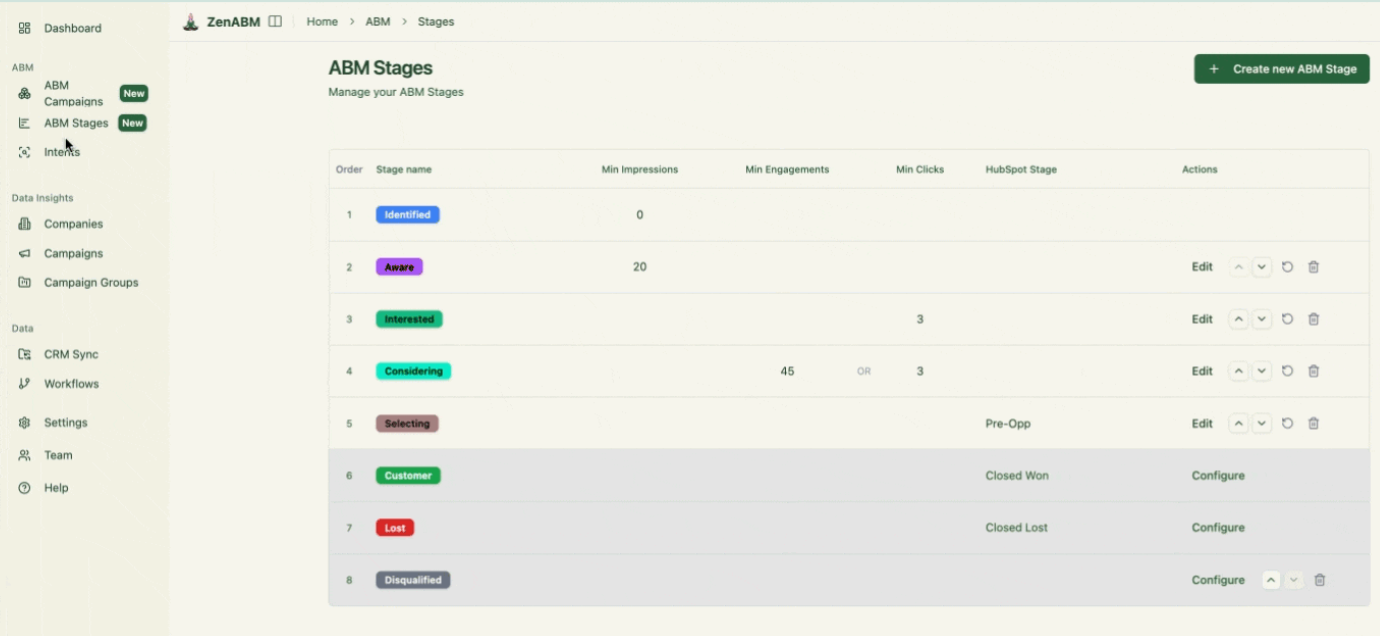
Use ZenABM to export lists of companies that engaged with each campaign or use case. Then retarget those accounts with follow-up ads or personalized messages.
Hope the tactics shared actually prove to be helpful to your ABM initiatives.
And as we discussed, ZenABM can help you execute these tactics with convenience and accuracy (you won’t have to rely on third-party data).